Mercedes-Benz C111 returns as vision of electric supercars
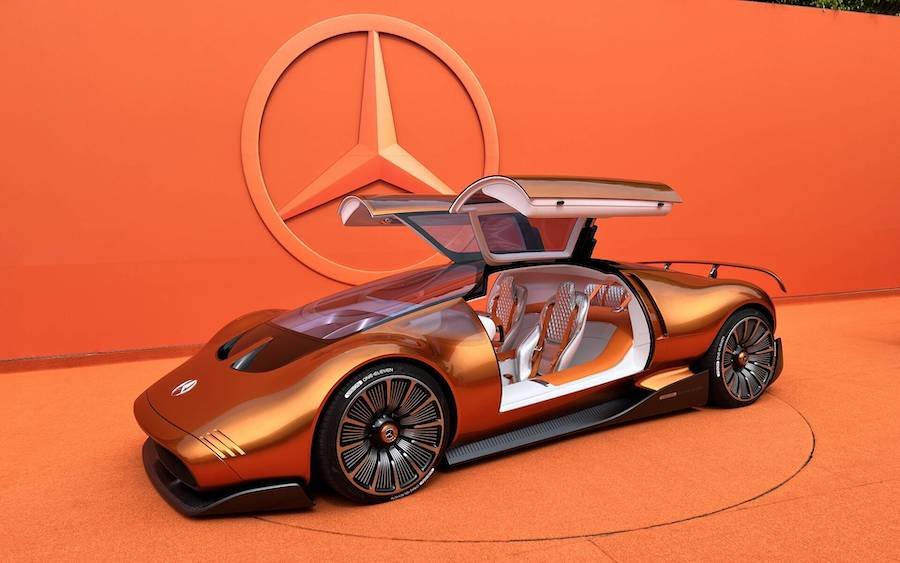
The striking new Mercedes-Benz Vision One-Eleven concept is a "progressive interpretation of a '70s brand icon".
The new two-seat hypercar, sporting a dramatic monolithic exterior design, gullwing doors and a flamboyant cockpit with silver upholstery, has been created as a one-off tribute to the firm’s experimental C111, of which 16 examples were produced over two generations for various test and development programmes during the late 1960s and early 1970s.
Using two rear-mounted axial-flux electric motors from British firm Yasa and a battery with liquid-cooled cylindrical cells and novel cell chemistry developed for use by Mercedes-AMG’s UK-based Formula 1 division, the Vision One-Eleven also provides clues to the EV drivetrain developments that Mercedes has earmarked for its upcoming electric sports cars.
The German company hasn't released any power or range claims for its latest design-led concept but has said its uniquely configured drivetrain has “the potential to take electric mobility to a new level of performance and efficiency”.
Chief technology officer Markus Schäfer said: “The Mercedes-Benz Vision One-Eleven explores new paths for the future of performance. It offers a motorsport-like power output.”
The styling of the One-Eleven combines clean surfaced body forms and a flush-fitting glass canopy with a series of advanced aerodynamic functions and details that draw heavily on those of the C111 series.
A low-set front end mimics the look of the old prototypes, with a bluff nose section that incorporates two round driving lamps within a pixelated grille that's underscored by a large black carbonfibre splitter.
Further back, the One-Eleven’s overt focus on aerodynamic efficiency manifests in three air vents within each of the front corners, together with twin vents ahead of a windscreen that's steeply raked at an angle of 70deg and extends back to form the front section of the roof.
Meanwhile, wide carbonfibre sills housed within the wheelbase and combined with wind-cheating ‘blade’ elements channel cooling air towards the motors at the rear.
Additional vents are incorporated behind the doors, as is a deep rear window.
The smooth surfacing of the car's body is combined with heavily rounded forms, including heavily swollen wheel arches which house 275/35-profile front and 315/30-profile 22in wheels, and the prominent curved side panels, which are integrated into the lengthy gullwing doors and lift high to provide easy access to the interior.
The rear of the One-Eleven is dominated by a large spoiler that extends out to increase downforce. A pixelated section mirrors the look at the front, with an extravagant diffuser featuring lower down.
Mercedes' chief design officer, Gorden Wagener, likened the arched silhouette of the 4600mm-long supercar to the one-bow design of the road-going EQE and EQS electric saloons.
“The element of surprise comes from its clean, purist and, at the same time, extremely muscular proportions,” he said.
Inside, the squabs of the two seats are integrated into the floor. The pedals, leather-bound F1-style steering wheel and seatbacks adjust to allow the driver to strike a suitable driving position not dissimilar to that in the F1-engined Mercedes-AMG One hypercar.
The pixelated motif from the front and rear is incorporated into the dashboard’s brushed aluminium surround, while driver information is housed within a central touchscreen display that runs Mercedes' latest MBUX software and can be extended with augmented-reality functions.
The silver upholstery of the seats is combined with white fabric and orange leather to give the One-Eleven a distinctive colour combination.
The compact housing of the electric motors at the rear also frees up space in the rear for a sizeable luggage shelf - hinting at the potential duality of future AMG EV flagships.
Axial-flux motors are being developed for large-scale production by Mercedes and Yasa. As well as boasting superior power and torque density than existing radial-flux motors, they give major packaging advantages, due to their narrow design.
Yasa says the weight of its axial-flux motor is just one-third of that of the radial-flux motors used by Mercedes in its current family of EQ EVs.
Based in Oxford, Yasa has been a 100% subsidiary of Mercedes since 2021.
At the unveiling of the One-Eleven, Mercedes confirmed that axial-flux motors for future production cars will be manufactured at its Berlin-Marienfelde plant in Germany.
To celebrate its latest concept, Mercedes has created a series of One-Eleven accessories, including a weekend bag, sunglasses, a hoodie, a cap and a smartphone case, all bearing ‘Limited Edition 1 of 111’ lettering.


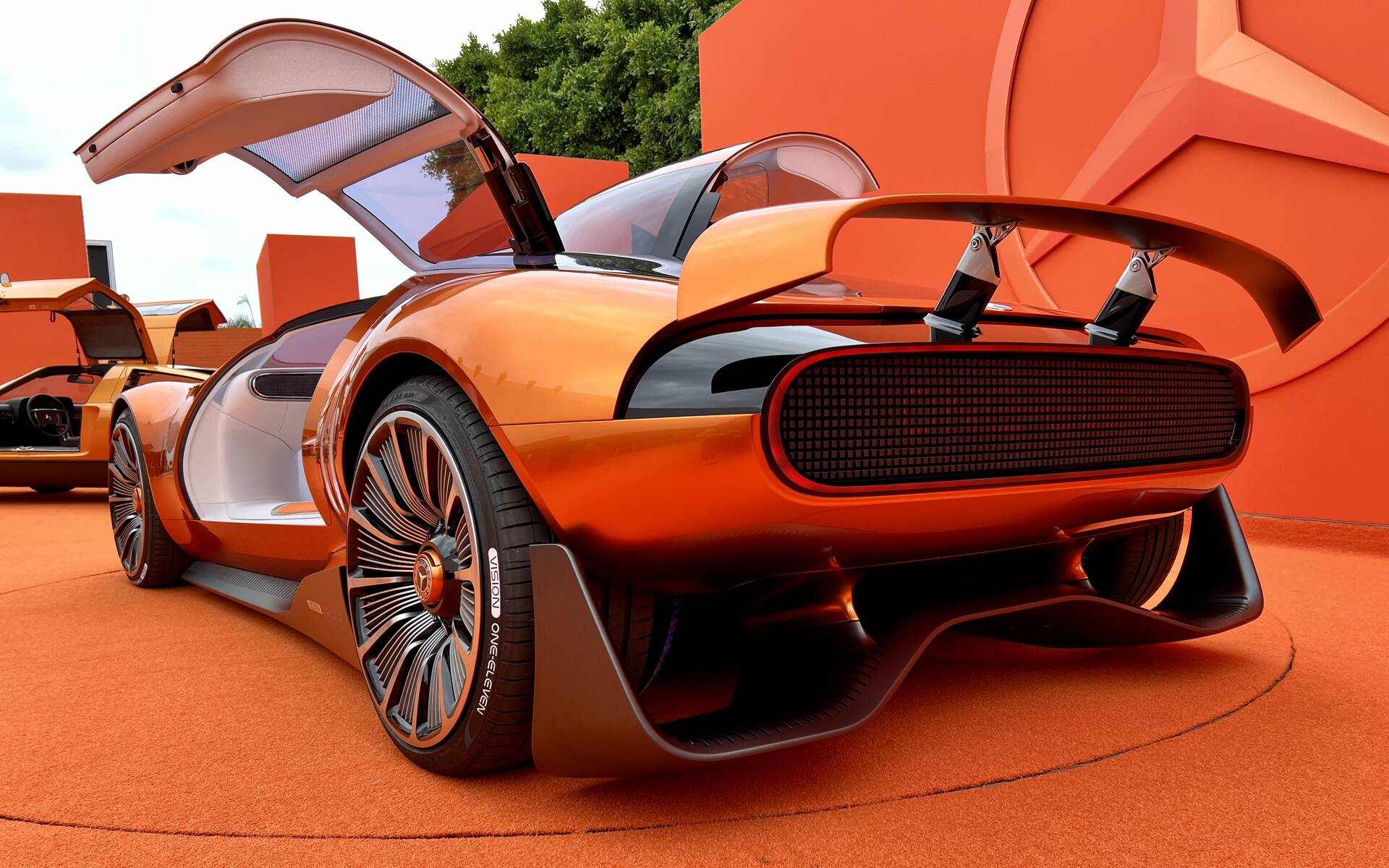
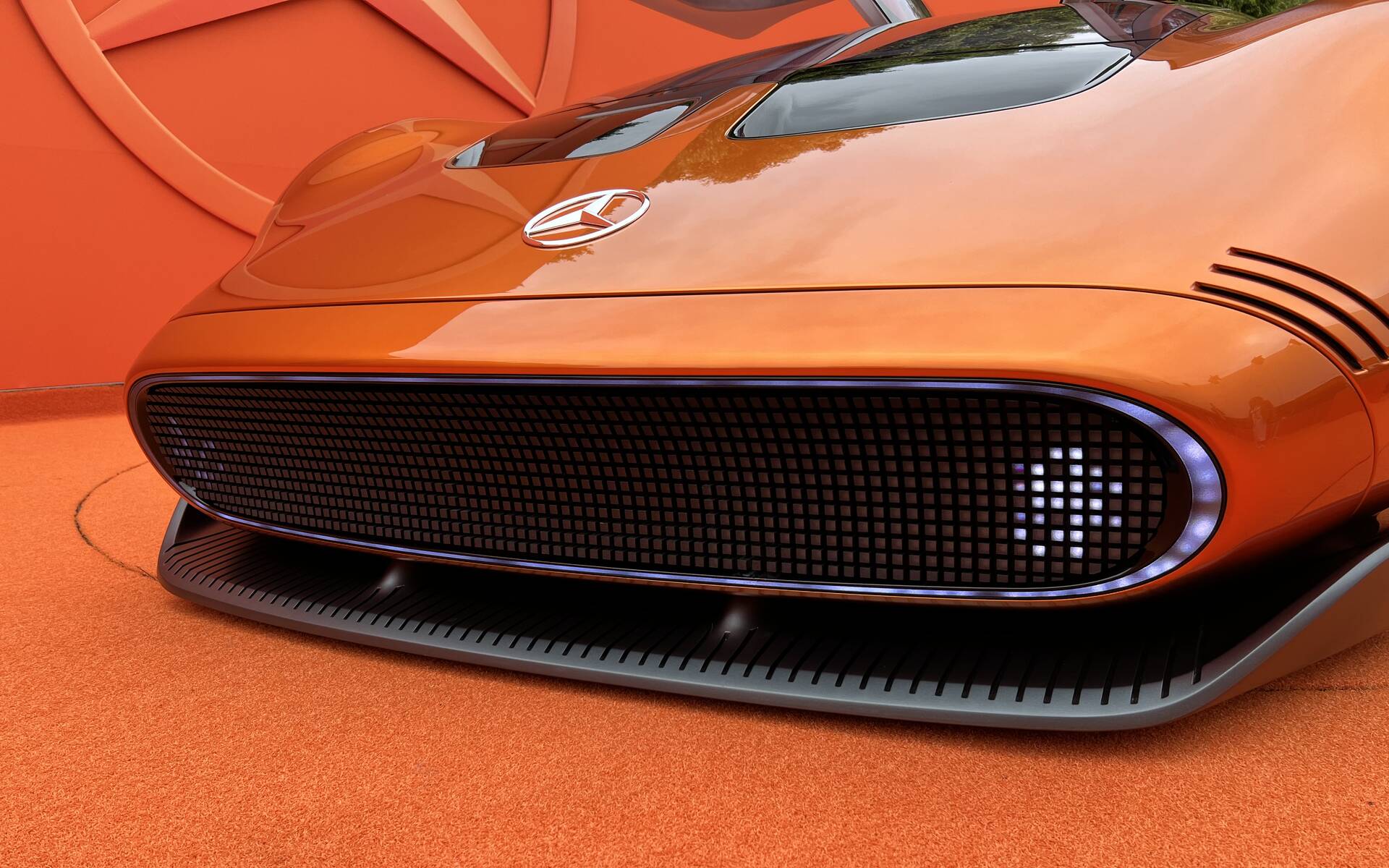


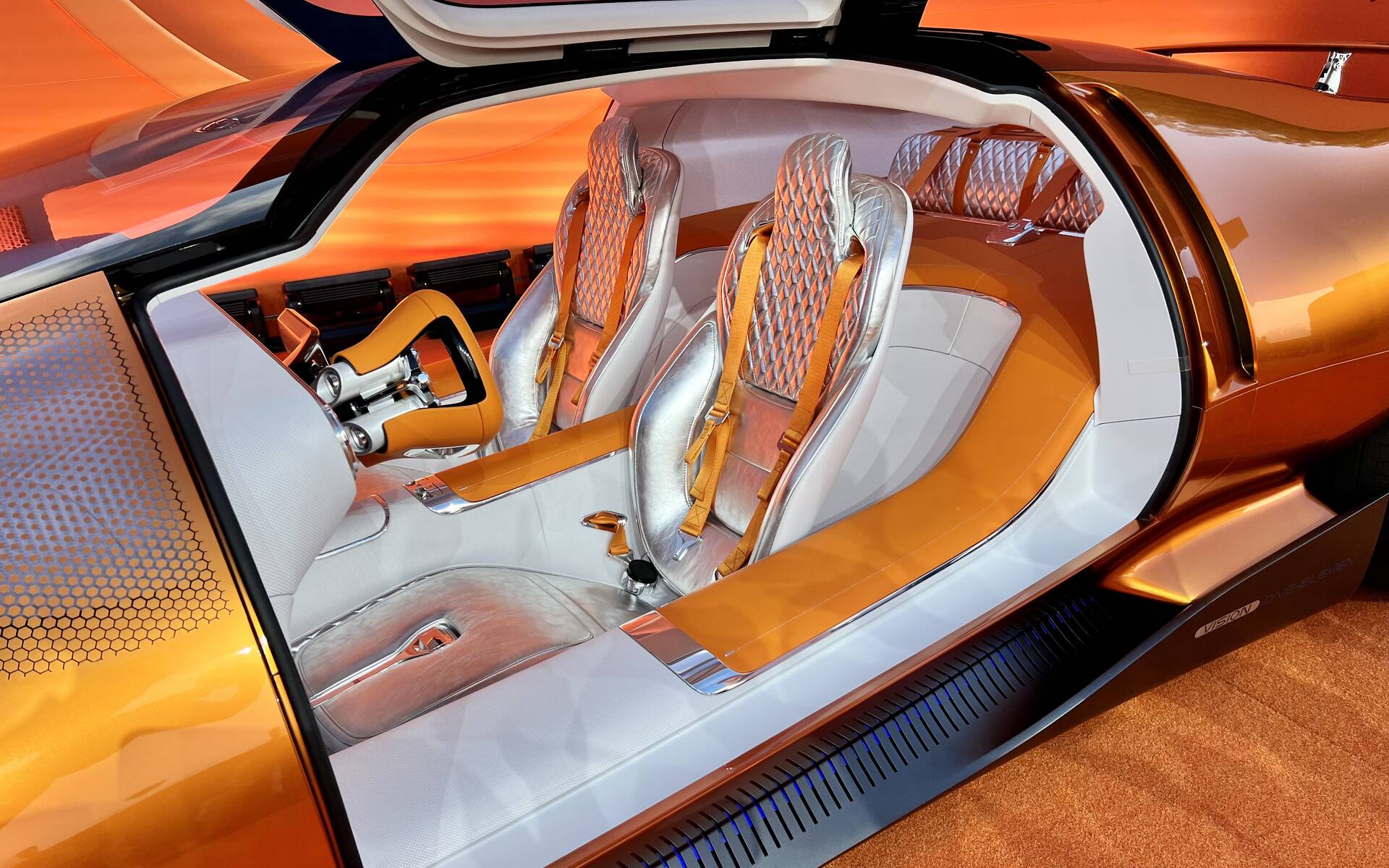
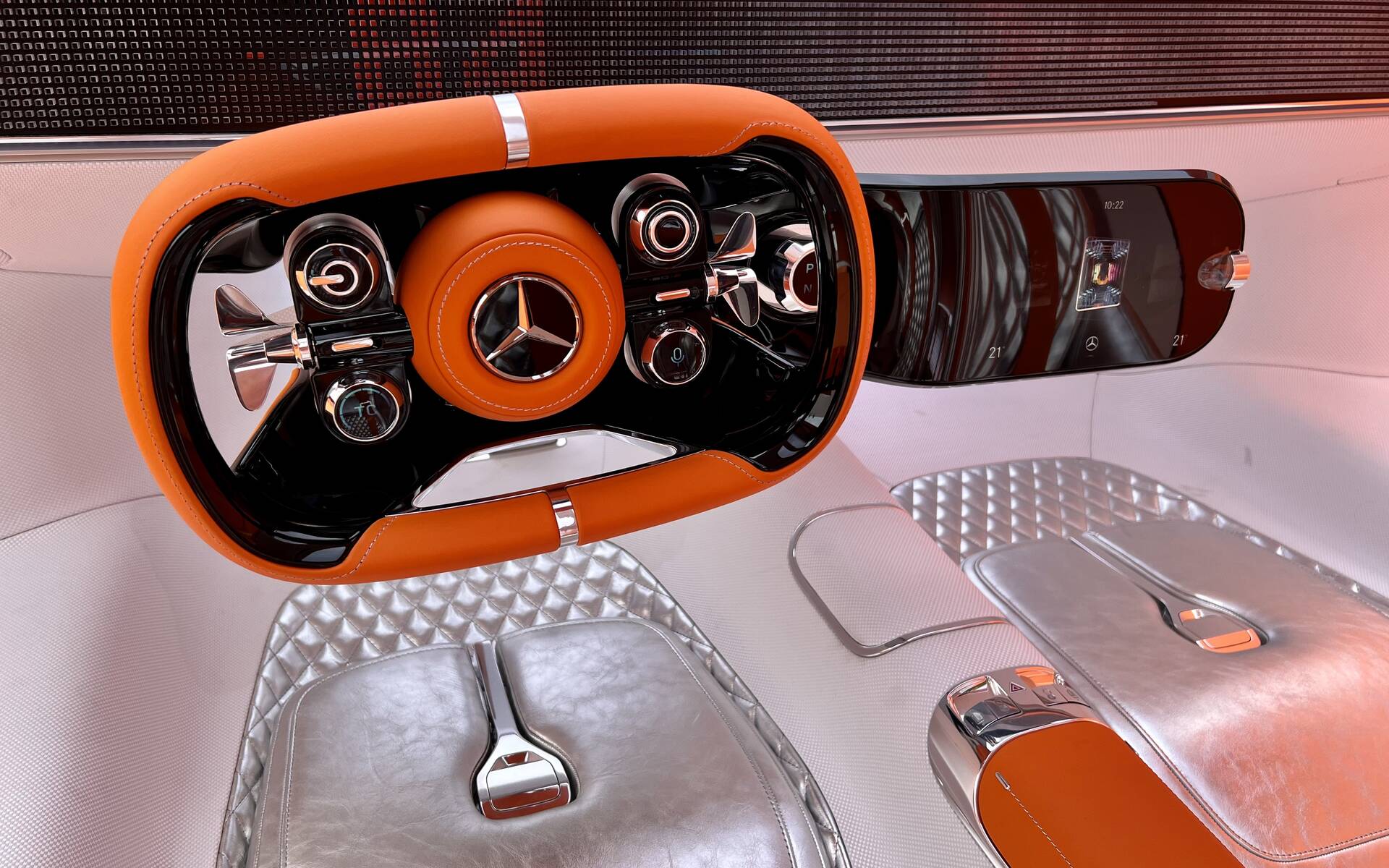
Related News


